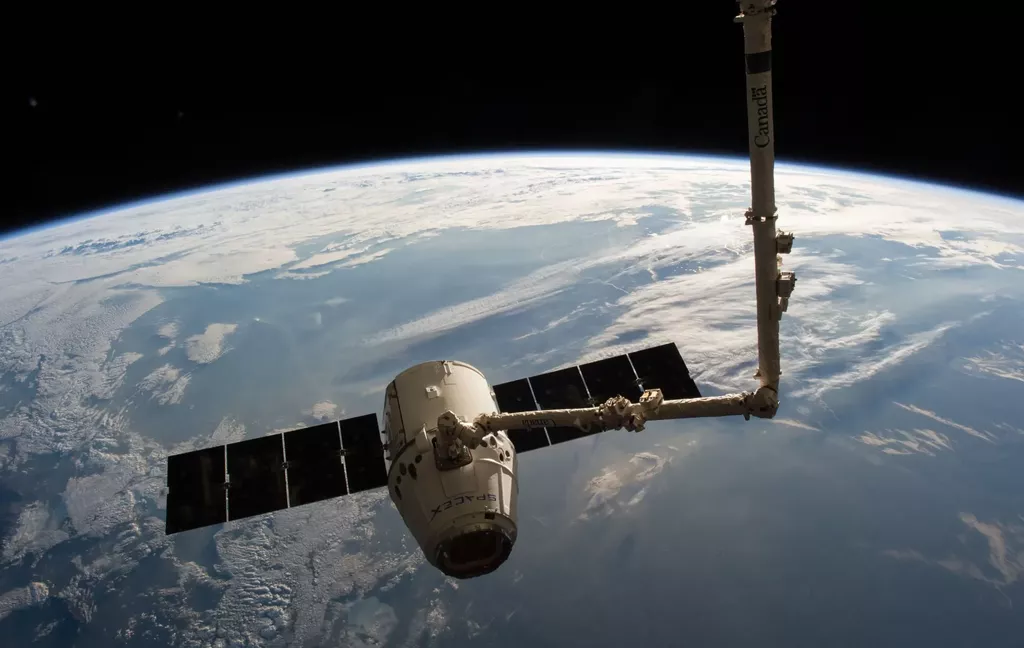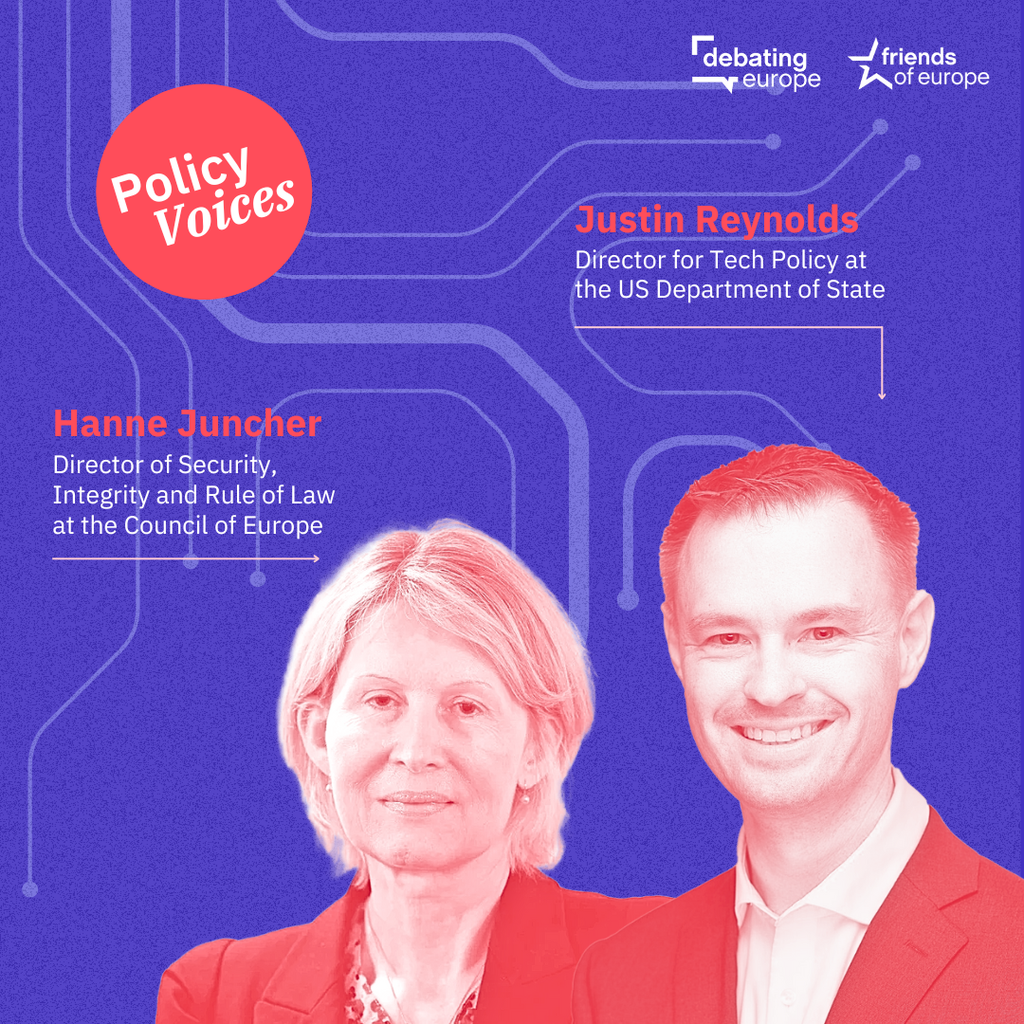A European agenda for space: resilience, security and sovereignty
Past event In person

- Area of Expertise
- Digital & Data Governance
Digital & Data Governance

Director of Commercialisation, Industry and Procurement at the European Space Agency (ESA)
The space sector is undergoing massive technological changes, from the introduction of low-cost launchers to greater reusability, miniaturisation and digitalisation, alongside a governance and procurement revolution via new business models, where competitiveness and commercial investment have become key for space development today.
As of 2021, the global space economy represents already more than €300bn per year and could more than double within a decade. This commercial ‘explosion’ touches on all sectors of space, from launchers and applications, to exploration and low-Earth orbit (LEO) economy. Government investment and policies remain crucial to lowering the high risk of early investments, such as supporting innovation, technology and incubation, and to support the development of the market through a strong customer base.
Over the past decade, the exponential growth of the space economy has started to attract the interest of investors. Today, global private investments in space have reached about 12% of public spending, while European private investments in space are only 4% of the European institutional budget for space – a volume three times smaller than the world average. The picture is even gloomier if we consider that less than 5% of the global private investments went to European companies. European investors have a different risk culture, and space technologies and markets are still considered exotic and difficult. However, a positive sign is that the pace of growth of private investment in European space activities is very high and that 60% of this private investment comes from European investors.
Nevertheless, there is a clear risk for Europe to lose competitive capabilities, opportunities and talents in space, should the European Space Agency (ESA), together with the European Union, fail to develop a solid approach to commercialisation and to encouraging the further development of a European ‘New Space’ ecosystem providing fast-paced innovation to space in Europe.
The scaling up of funding and the capacity of the industry to attract private funds remains very limited
The recently released report by the High-Level Advisory Group clearly recognises these challenges and invites the ESA to embrace commercialisation and take immediate action to stimulate the European space economy, with an emphasis on novel procurement practices in order to fully leverage the innovation excellence of the European space industry.
In line with the mandate given by Article VII of the ESA Convention, multiple successful programmes and activities to support the competitiveness of the European space industry on global commercial markets have been established in virtually all domains of the Agency, such as GSTP, BASS, BOOST!, NAVISP and EO InCubed.
Although these initiatives have proven over the years to be highly effective in supporting the growth and ensuring the maturity of the European space industry, the scaling up of funding and the capacity of the industry to attract private funds remains very limited, especially when compared to the investment landscape of the United States and China. Having built an investment ecosystem for €2mn to €20mn, Europe now needs to address its funding and skills gaps for companies that require funds in the range of €20mn to €200mn and beyond. The challenge of commercialisation for ESA is providing the European space industry with the appropriate tools and frameworks to attract patient investors, fast-paced and high-risk capital funds and cautious lenders – depending on the different maturity and risk level of the business and commercial value propositions.
In order to react vigorously to this situation, the High-Level Advisory Group advises the ESA Director General to further enable and facilitate the emergence of a European commercial ‘New Space’ sector by acting on three main factors.
Risks in this New Space approach need to be managed in a different way
The first factor is talent. This means ramping up investment in human capital, cross-discipline innovations and disruptive or game-changing technologies, while accepting the related risks and failures. ESA will develop a European-wide Phi-Lab network and reinforce the technology transfer opportunities both as spin-off and as spin-in, while continuing to build on and consolidating the highly successful network of Business Incubation Centers it has implemented across all its Member States.
The second key factor is capital. A New Space approach incorporates novel business ideas in space systems and services with commercial goals, supported by private investments. Consequently, in order to attract private capital, it is vital that these entities have aggressive time schedules to quickly break even and address customers’ needs. Furthermore, risks in this New Space approach need to be managed in a different way with respect to what is done in traditional missions. We need to attract investors beyond seed and series A funding, facilitate access to scale-up funding for newcomer entities and start-ups, and partner with entities such as the European Investment Fund or with European venture capital funds and advising capital markets-related bodies. This can be implemented by ESA building on its recognised technical and engineering competences and providing advisory services to its financial partners, in cooperation with the European Commission Cassini initiative, for example. Among the start-ups incubated in the ESA’s Business Incubation Centres, those with a commercial and sustainable potential should accede to scale-up funding and where relevant be integrated in supply chains.
The third factor – critically interconnected with capital – is speed. Institutional processes such as procurement and industrial policy should facilitate the access to ESA contracts for newcomers and small entities, which should also be provided with rapid and regular In-Orbit demonstration and validation opportunities. This requires transformation and change in the culture of risk-avoidance, but also an adapted role in procurement of services, specifying user needs, and adopting new contractual tools such as agreements with a gateway approach.
ESA needs to start implementing these recommendations without delay to enable the emergence and growth of a European New Space ecosystem and to boost the commercialisation of space. The window of opportunity for the ESA to involve itself in this new ‘world’ is limited, and should the European New Space fail to develop and grow rapidly enough, there is a clear risk that it could be partly or fully replaced by the installation of the well-established, non-European predecessors.
There is huge potential in Europe for the growth and maturation of the European New Space
In particular, ESA should provide a framework that fosters the growth of new businesses and sets up an environment to support the generation of a competitive industry capable of capitalising on its products outside of the traditionally-held ESA or publicly-funded perimeter of programmes. ESA should also support all the foreseen dimensions of the EU Cassini initiative in a coherent manner.
There is huge potential in Europe for the growth and maturation of the European New Space. Ideas, innovation, dynamism and talent are abundant. There is increasingly accessible capital, as the European investor community continues to develop quickly. Speed is of the essence, in the sense that the ESA must adapt itself rapidly and evolve its processes if it wants to remain a relevant partner.
New Space is not only desirable because of its innovation and commercial potential, but also because of the new methods and ways of working that it brings with it. It is clear that the New Space approach can be a powerful stimulus for students and young engineers to work in space because of the increased autonomy and responsibility that they can be granted. Additionally, New Space has drastically lowered the barriers of access to space.
ESA’s vision is that Europe will have the world’s highest growth rate of private investments in the space ecosystem by 2025. The success of public actions in support of commercialisation can be measured by assessing the ratio of private and public investment spending in Europe compared to the global level, the capacity of new European space companies to scale up and become unicorns, as well as the creation of new space markets.
Embracing commercialisation of space with resolute, legitimate and credible actions can boost multiple facets of European international leadership and global influence, resulting in far-reaching positive outcomes for European economies.
This article is part of the Friends of Europe’s Making Space Matter initiative, in partnership with the European Space Agency, which aims to answer pressing questions about how investing in European space exploration, capacity and infrastructure can boost governance, cooperation and societal empowerment.
Past event In person

Next event In person & livestreamed

Past event Online

Past event In person





Stay informed
We use cookies and similar technologies to adjust your preferences, analyze traffic and measure the effectiveness of our campaigns. Learn more about our privacy policy.